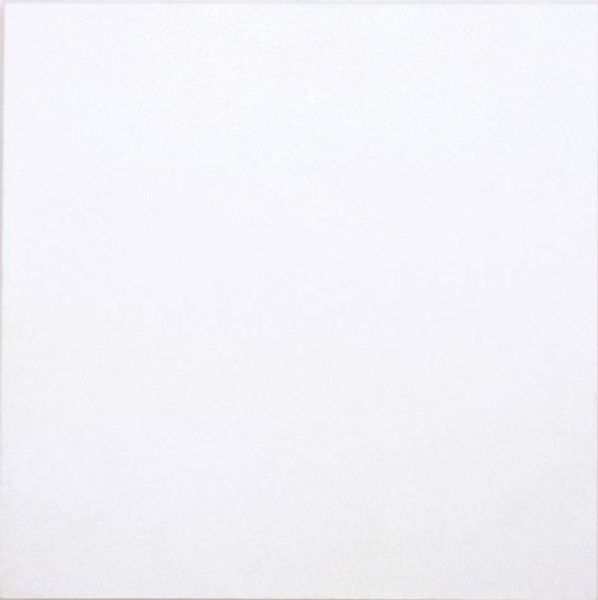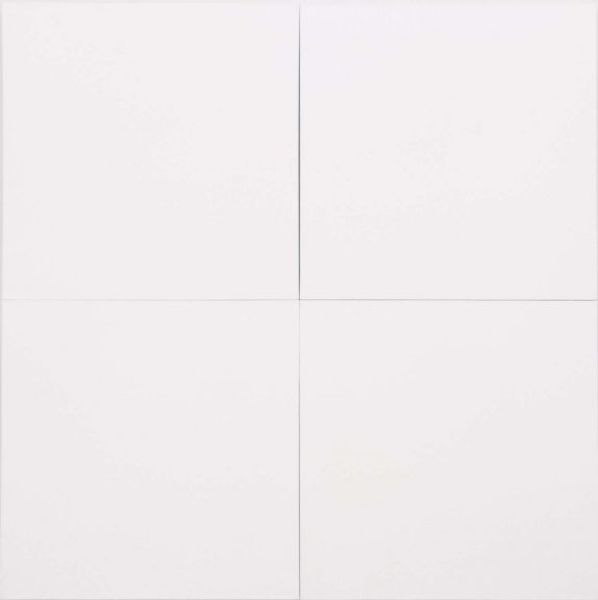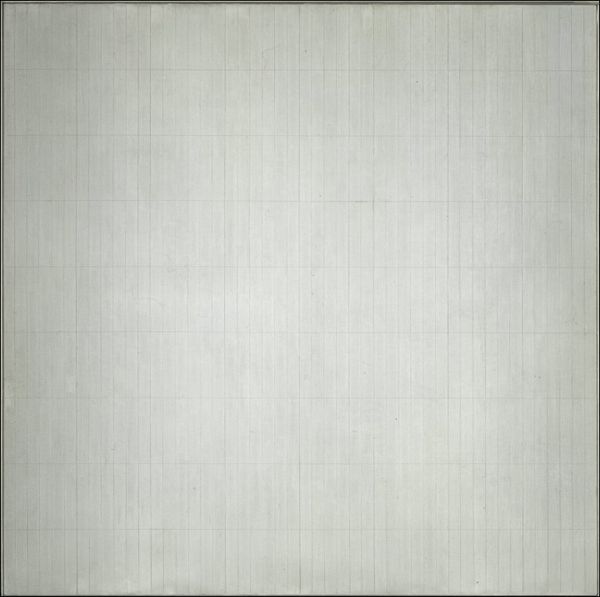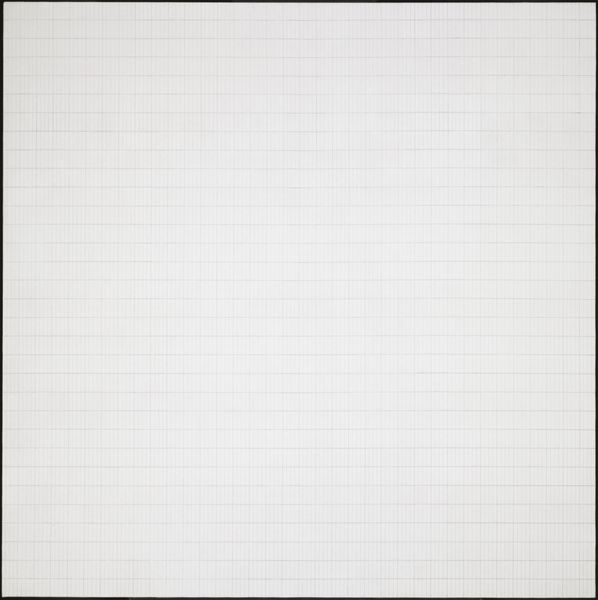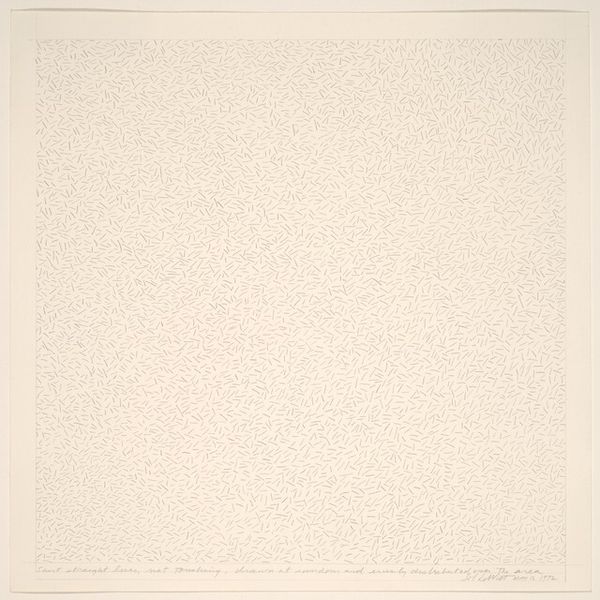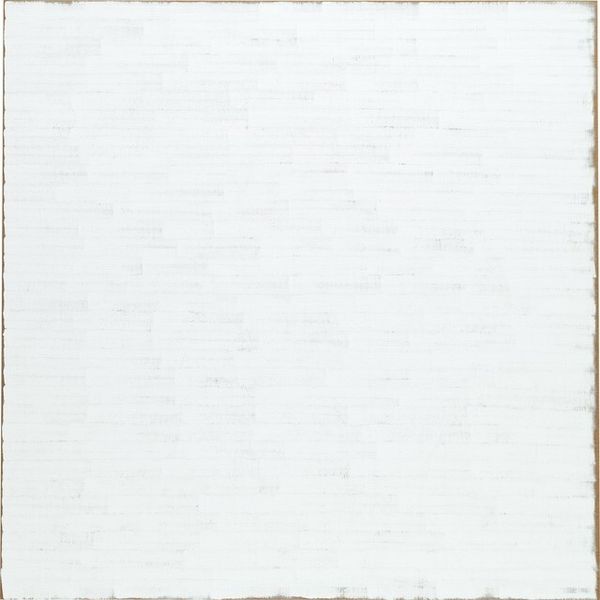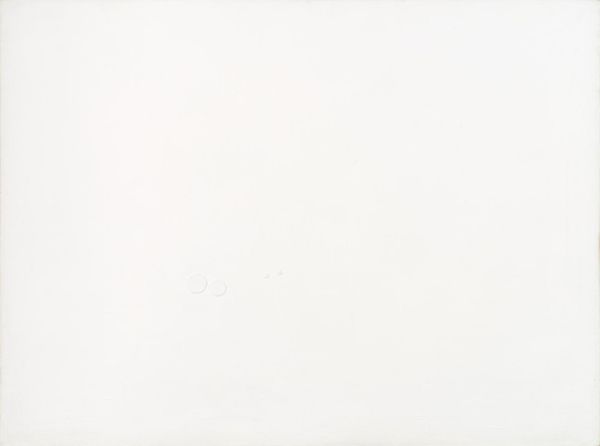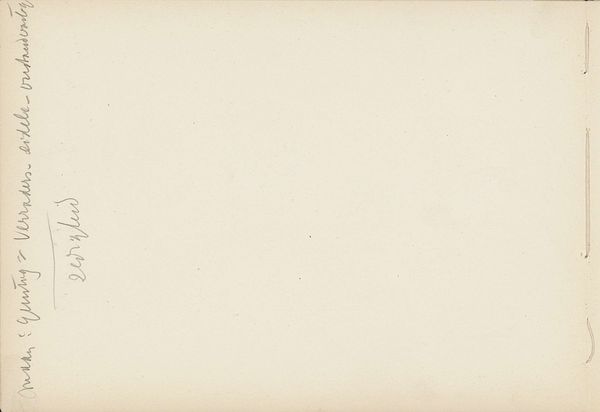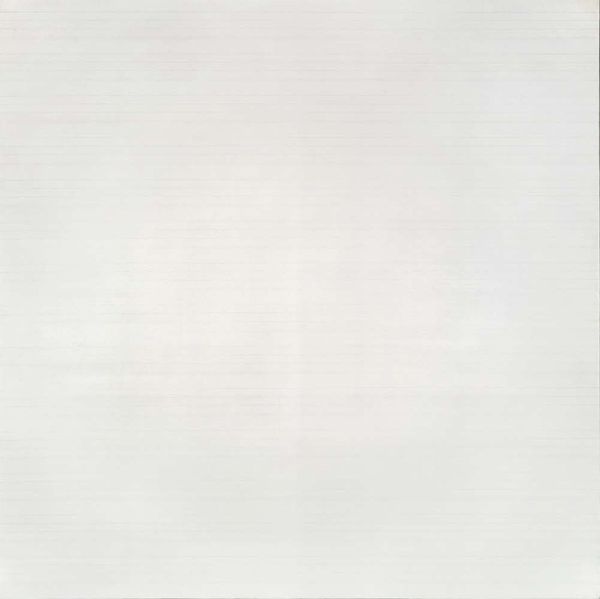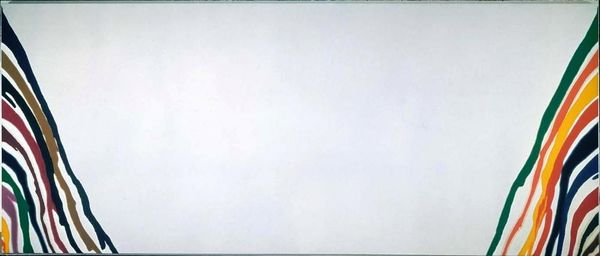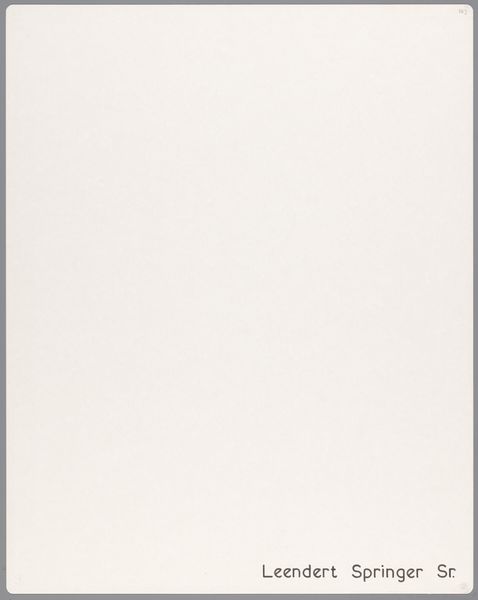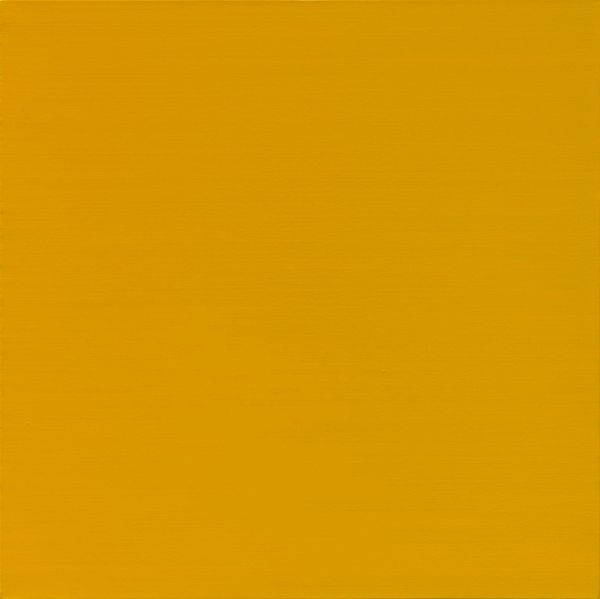
#
white colour balance
#
photo of handprinted image
#
natural stone pattern
#
pale palette
#
pale colours
#
natural tone
#
light coloured
#
white palette
#
light colour tone
#
white balance
Dimensions: overall: 186.69 × 186.69 cm (73 1/2 × 73 1/2 in.)
Copyright: National Gallery of Art: CC0 1.0
Editor: Here we have Anne Truitt’s "Arundel XI" from 1974, and it's, well, it’s mostly white! There’s a faint vertical rectangle along the left edge, and it has this really subtle, quiet feeling. How should we approach understanding this work? Curator: Let's think about the broader artistic context of the 1970s. Minimalism was really pushing boundaries, challenging the very definition of what art could be. How does this piece play into or against that, do you think? Editor: It feels incredibly minimal, even stark. Was Truitt engaging in conversations about institutional critique by presenting something so seemingly…empty? Curator: Precisely! Consider the historical power dynamics at play. What voice is typically centered in artistic discourse? And what happens when an artist like Truitt offers a deliberate absence of traditional narrative? The viewer is compelled to create their own. Is that empowering, or is it alienating? Editor: I guess it’s both, potentially? It demands that the viewer engage and bring their own experiences to it. Was Truitt trying to make a statement about the art world’s expectations? Curator: Certainly. The sparseness forces the viewer to question their own assumptions about art, the role of galleries, and how these spaces shape what we value. Do you think the social and cultural climate might affect our reading of such works? Editor: Absolutely. Looking at it now, I wonder if the white evokes feelings of erasure or even a kind of silent protest against the more dominant, louder narratives? Curator: Excellent point! And in terms of its reception, was a largely white canvas treated differently in museums and galleries, compared to artwork showing a different visual representation? Whose stories get told, and whose are overlooked? It also makes me wonder, do the light color and simplified shape reflect societal values associated with cleanness or emptiness? Editor: This has really broadened my perspective; it is much more than just a "white painting" after all. It makes you think about whose voices are heard in art, which feels like the most important question. Curator: Indeed. Examining Truitt's work reminds us to critically analyze the spaces, voices, and power structures that shape our understanding of art history and culture.
Comments
No comments
Be the first to comment and join the conversation on the ultimate creative platform.
